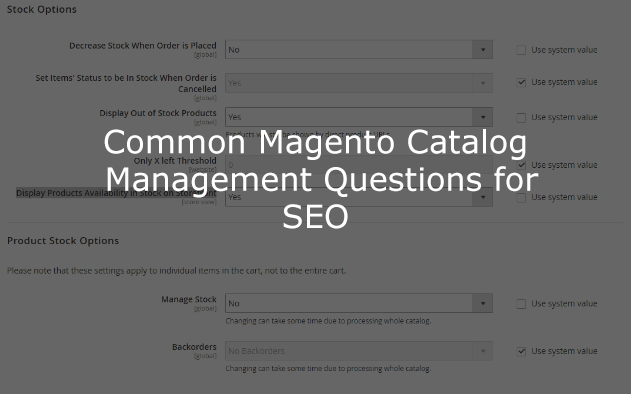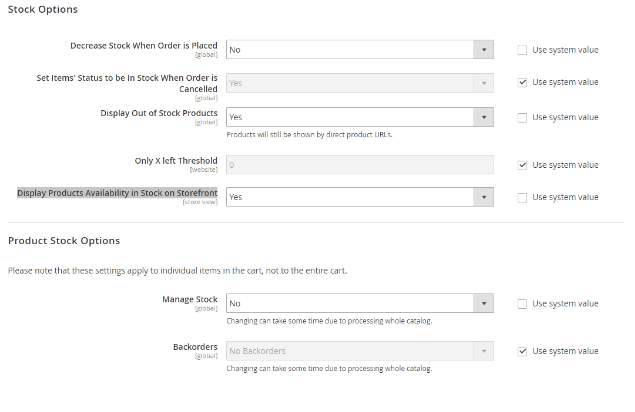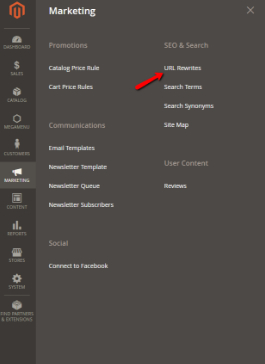
Your Magento Catalog SEO Questions Answered
Merchants frequently come to us with questions and concerns about managing the Magento catalog to assist in achieving good SEO rankings. Magento is a powerful and complex platform and can be difficult to navigate for a lot of merchants. We’re happy to help clear things up and check things off your to-do list. In an effort to help other merchants who need help managing their Magento Catalog SEO, we’ve put together a how-to guide on how to handle some of the frequently asked questions.
What to Do with Out of Stock Products in Magento?
If the product is out of inventory but will become available again in the future, set the product to ‘Out of Stock’, leaving it enabled so it is still visible in the catalog. Disabling and re-enabling products in Magento causes the product URL to 404, and then become available again. This can damage your SEO reputation, especially if it happens on a regular basis. We recommend utilizing Magento’s upsell functionality to present alternative options to customers from the product page, or add an extension for customers to receive notifications when a product becomes available again.
You can set up your Magento site to Manage Stock, Display Products Availability in Stock on Storefront and even allow back ordering under Stores > Configuration > Catalog > Inventory.

What to Do with Discontinued/Obsolete Products?
If you have products that need to be removed from your catalog altogether, be sure to “disable” the product. Then create a 301 redirect from that product URL to a relevant replacement product or parent category. Do not delete the product, if you do, the product data will not be referenced in historical data on orders or reporting.
You will need to manually create a 301 redirect in this kind of situation, which can be done under Marketing > URL Rewrites, as shown in the menu below:

What to Do with Products with Little or No Unique Content?
All too often, retailers use the default product descriptions and specs provided by the manufacturer on product pages, without taking the time to include any other unique information about the product. In addition to your own take on descriptions, using your own images and videos is a great way to ensure that your products stand out.
Prioritize your products by popularity or profitability, and have a sales/service rep, or even an intern go through the list and write one paragraph for each product. If you’re selling widgets that do not have anything obvious to write about, or if you are struggling to find a unique feature to write about, write a story about how a customer could use the product. Talk about ways to creatively use the product in a way that could solve a problem. (Think about the Petermann catalog on the Seinfeld series.) Instances like this is where your phone sales staff could really come in handy, as they know the products and how customers use them better than anyone.
Product images and videos should be engaging and show how the products work for your intended audience. Product pictures and videos should further reinforce your brand’s lifestyle. The primary way to stand out from your competitors is with your branding and content. If you have the ability to do better than the images provided by manufacturers, dedicating the resources and allocating the time will help you sell your products. Here is where you have the opportunity to shine!
How to Deal with Product Variations?
Use Custom Options on any product with variations for which you do not need to track inventory. From there, the pricing markup is simple, such as +$2 for XXL t-shirt. If you need to track inventory on individual items or there is no consistent pricing structure between different options, or you have unique images for different options, use Configurable Products.
How to Handle Category Pages?
Category Pages are often one of the most overlooked sections in eCommerce sites – some merchants just treat them like a necessary evil in order to organize products, others go crazy creating categories on a whim with no real thought process. Category Pages are one of the most popular organic landing page types on your site. There needs to be a thought process behind Category Pages with organization and navigation in mind.
Name your categories something that will be familiar to customers. We recommend using categories for any kind of niche or key phrases that customers search for on a regular basis. Be careful to not be so specific that you need multiple categories where customers question which category to select. Anything more specific, or general, that doesn’t justify its own landing page can be referenced as attributes and used in faceted navigation.
Create content for every category, whether it’s written content on your story or favorite products within that category or how-to information – anything your customers will find relevant. If you have a blog or related articles, link to other related topics within your site from your Category Pages, but don’t overdo it. Only link to an article, blog post or featured product if it’s something your customers will actually find useful.
Finally, pay attention to your product sort order in categories, and manually control the sort order, or use an extension to dynamically list the most popular products first.
Leverage User Generated Content
There are plenty of articles out there on the importance of user-generated content, product reviews, and social comments. User-generated content adds value to your site and helps build trust. However, there are still merchants that disable product reviews because their new site doesn’t have any, and they don’t want to display empty reviews on the site. That’s a recipe for never getting reviews on your site. Instead, make notes when talking to customers and write any verbal or in-person reviews you receive to your website – or direct customers to leave a written review by asking them. Setup an email follow up campaign, and actually correspond with your customers on social to help spark interaction between your website and audience.
Mind the Site Search
Your site search is a goldmine of shopper intent – setup Google Analytics to track your site search queries, and use a search utility that delivers a good shopping experience. Review your site search queries at least once a month to see what customers are shopping for and to make sure the correct products appear for those queries. While doing so, take note of phrasing and spelling. Continually update synonyms or optimize your navigation if necessary to deliver what your customers are searching for without making them search. If you don’t have the time and resources to keep up with optimizing your site search, find a tool that can help do it for you.
Continue to build useful and relevant content on your site. Analyze your usage data and search queries to deliver a better shopping experience. Invest in the appropriate resources if you do not have the time or tools to do it manually. SEO is critical for success in eCommerce and is proven to increase sales. As Magento experts, InteractOne has valuable resources and insights specific to Magento merchants. We know SEO and Magento.
Contact us today to learn more about improving SEO and your Magento catalog management.